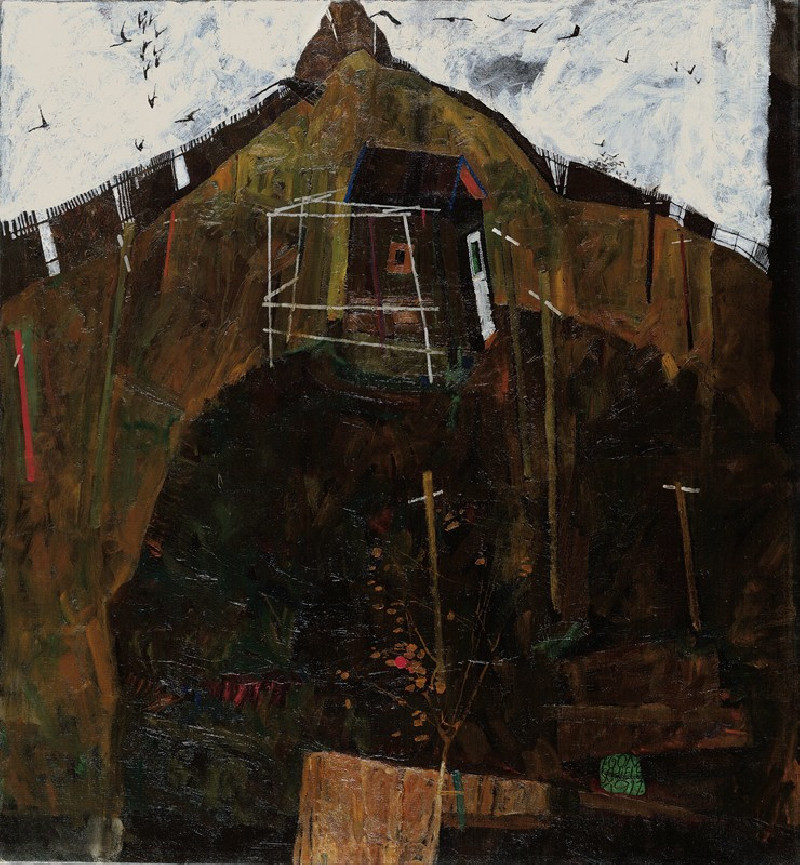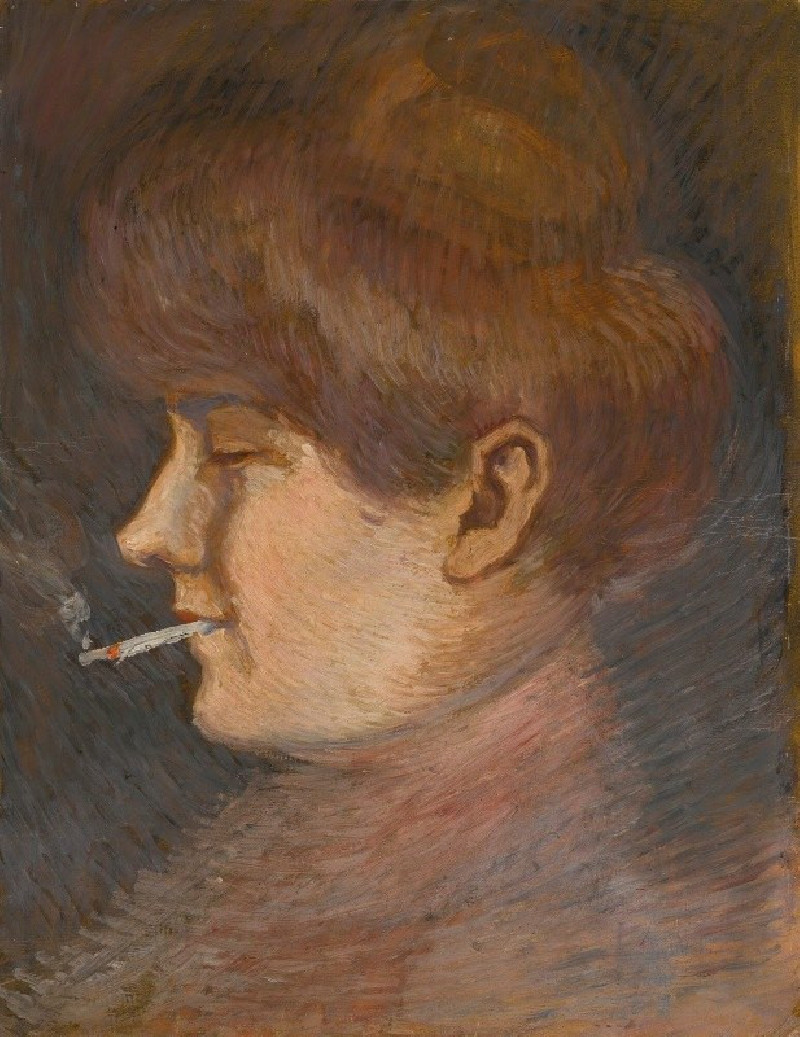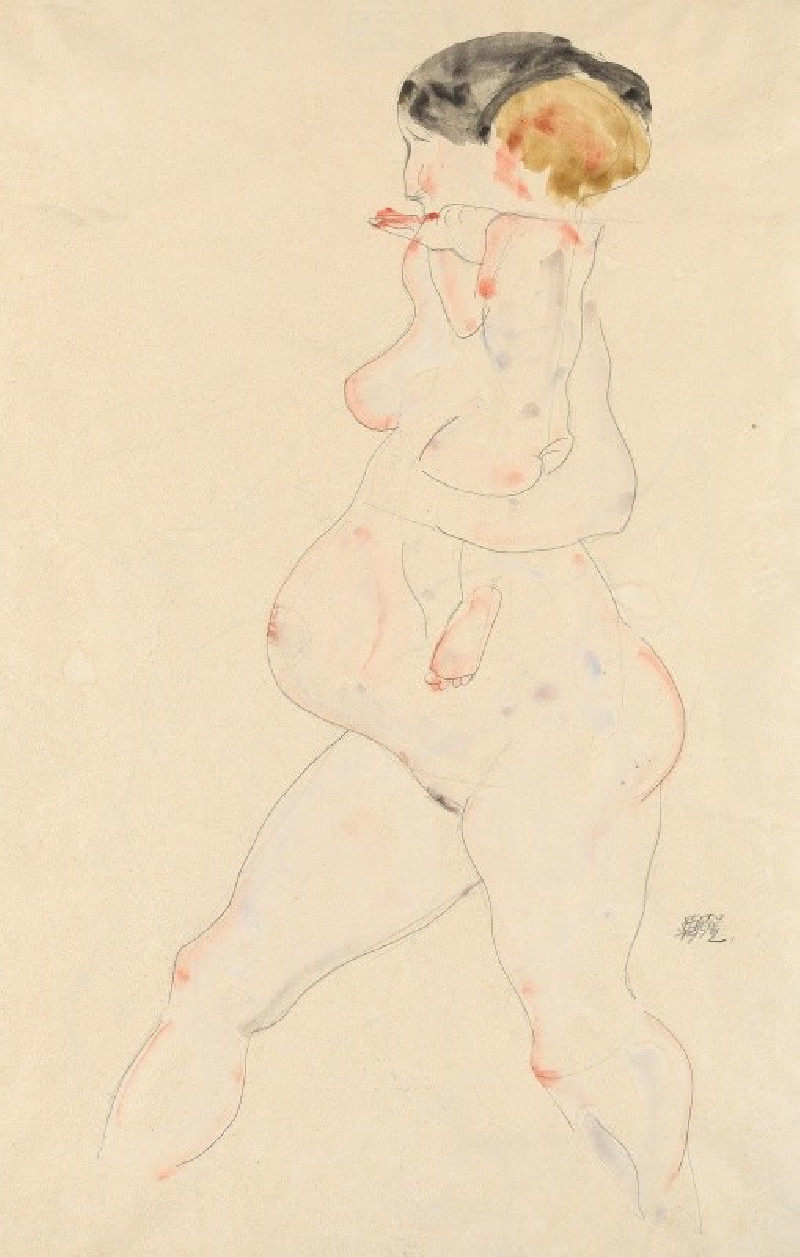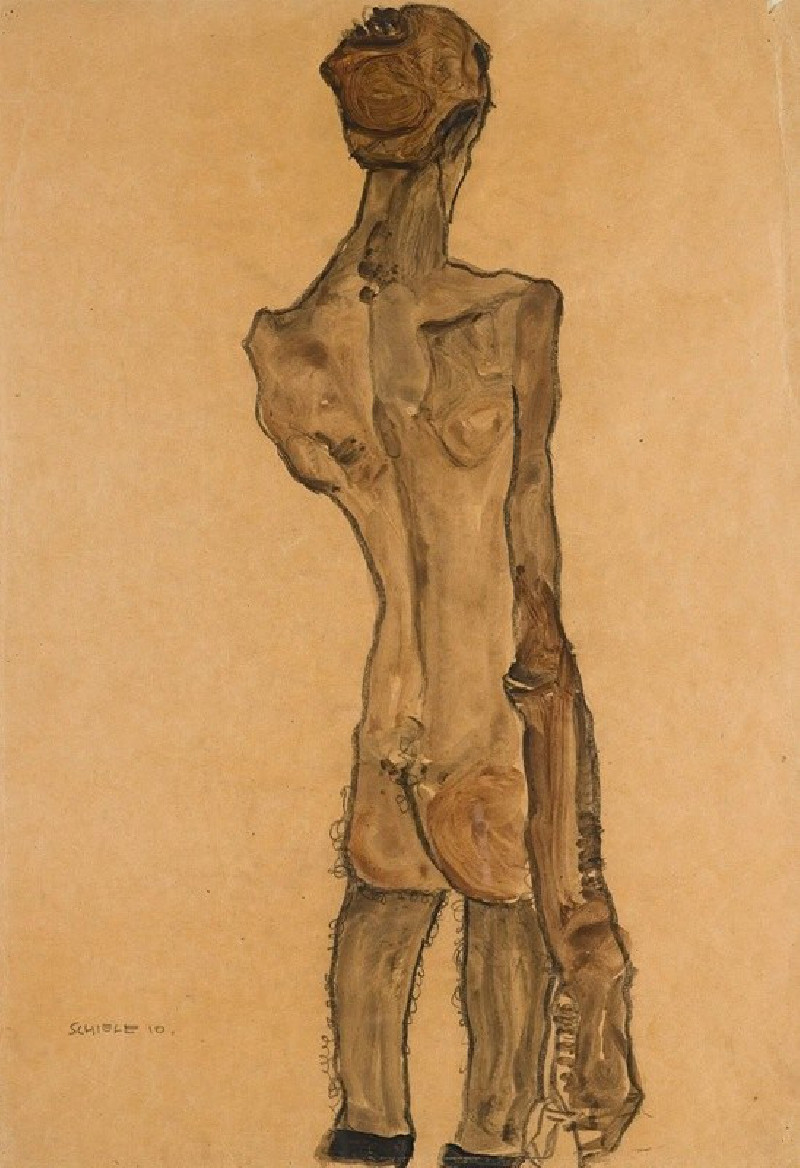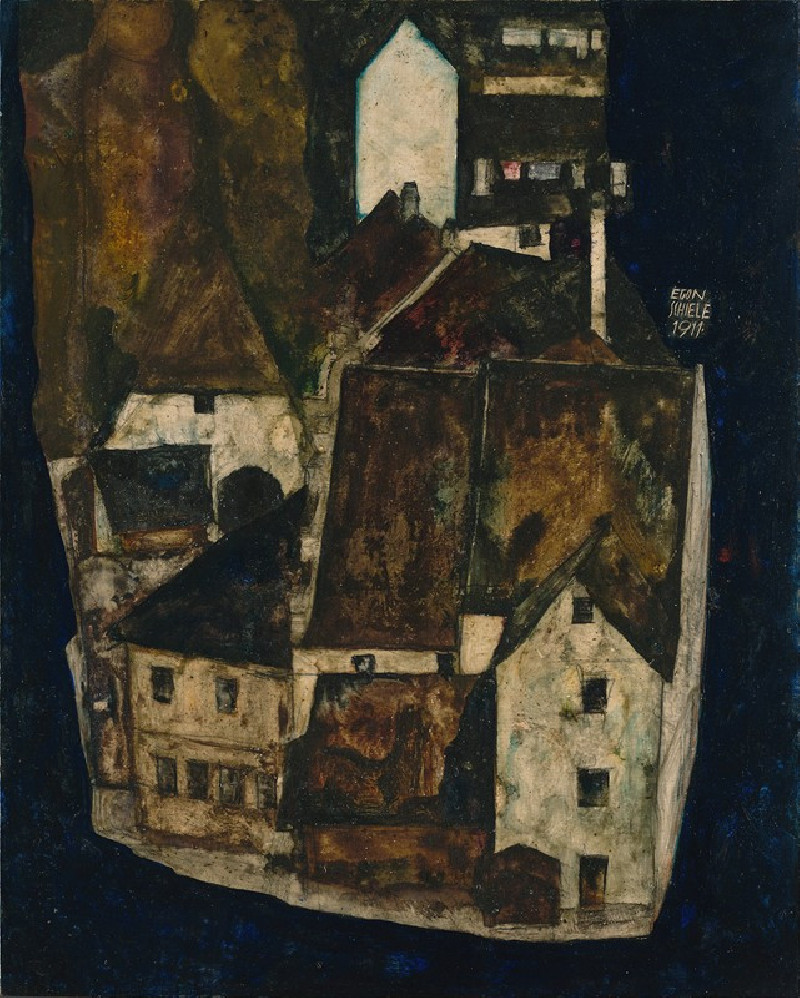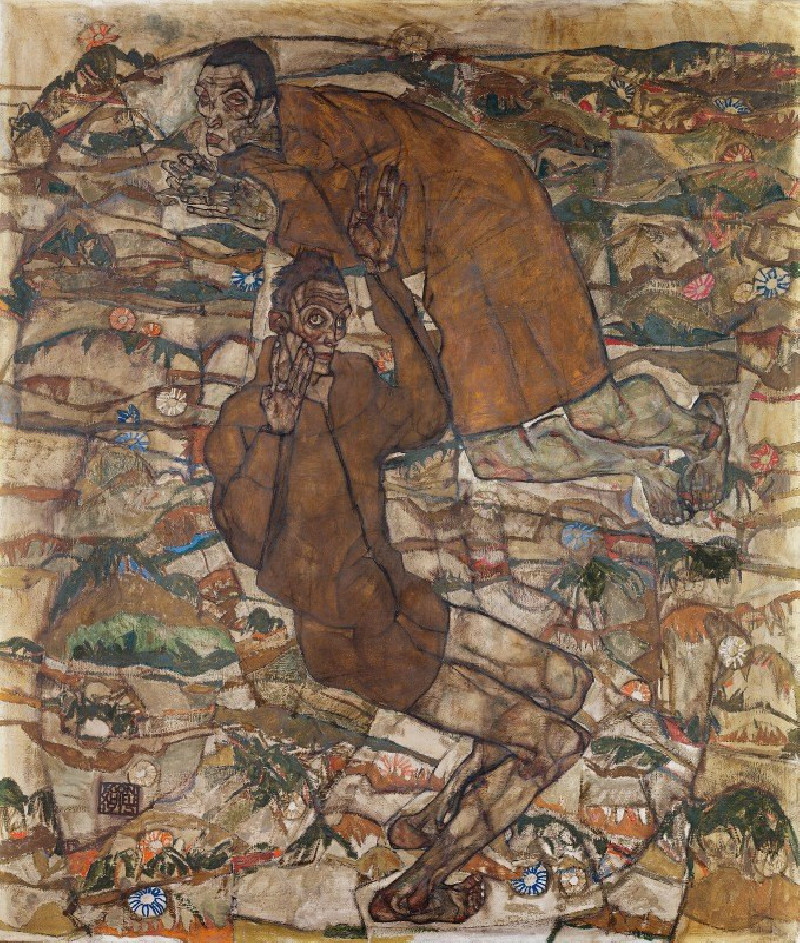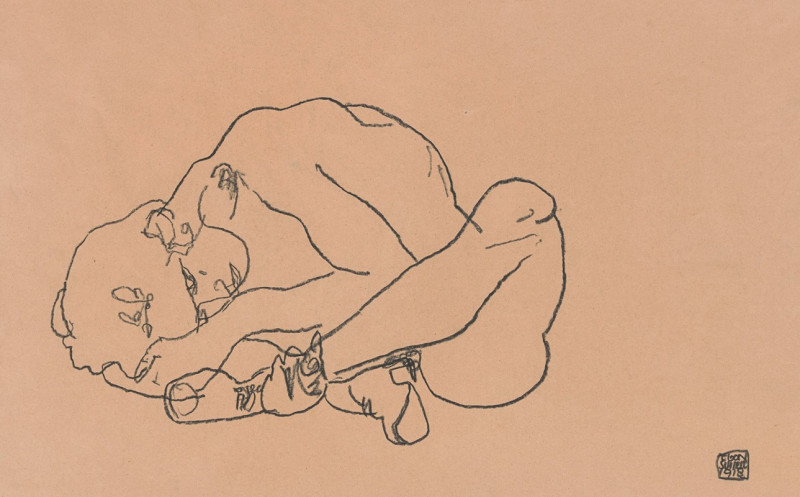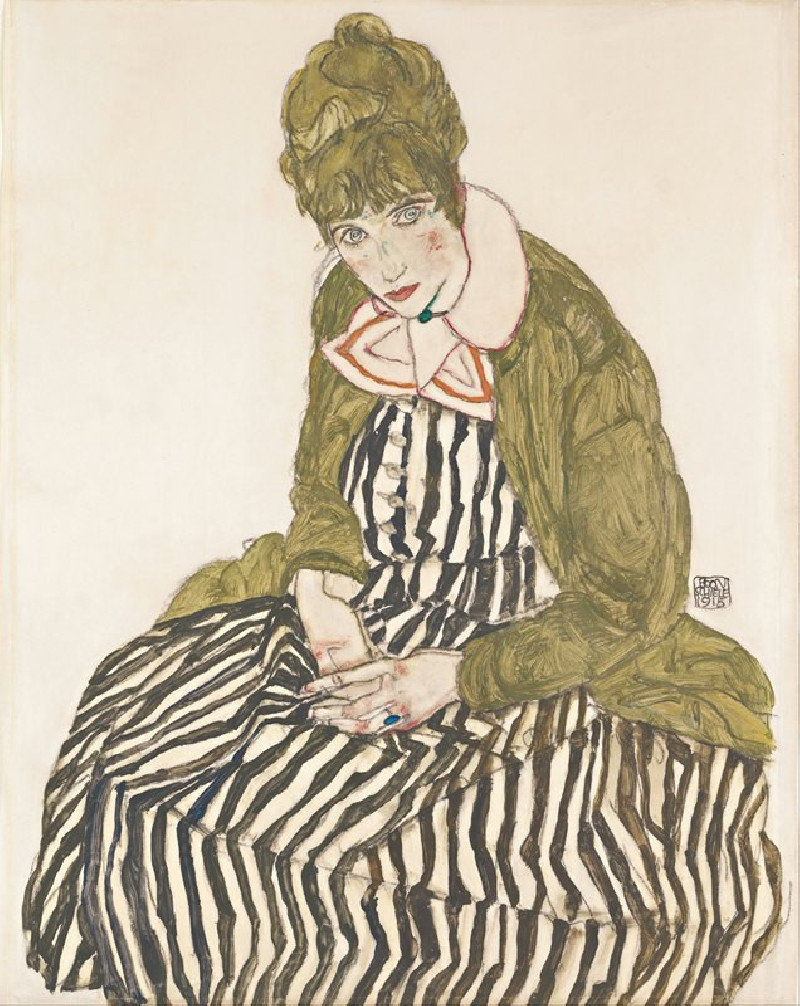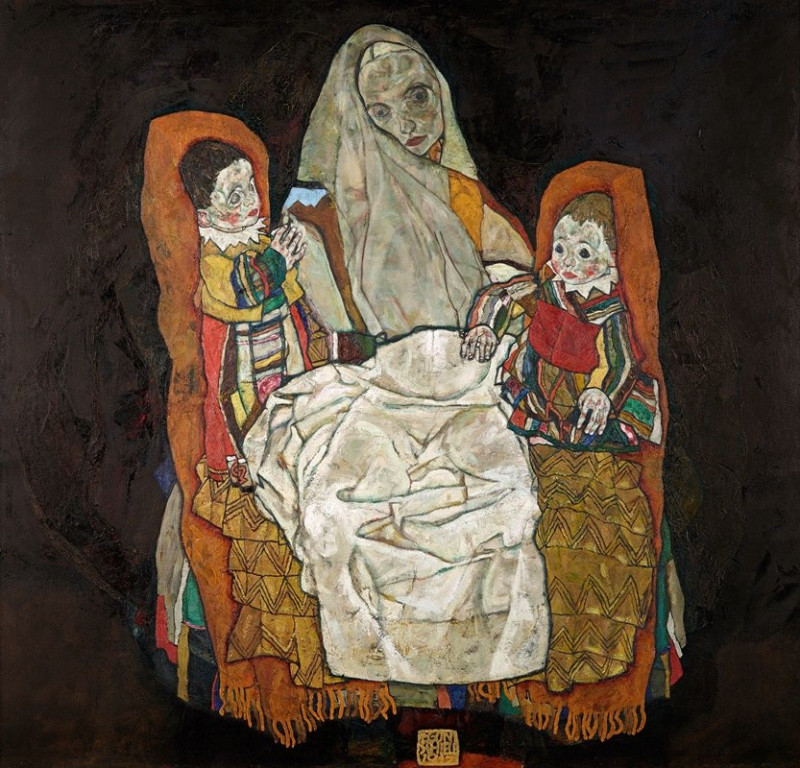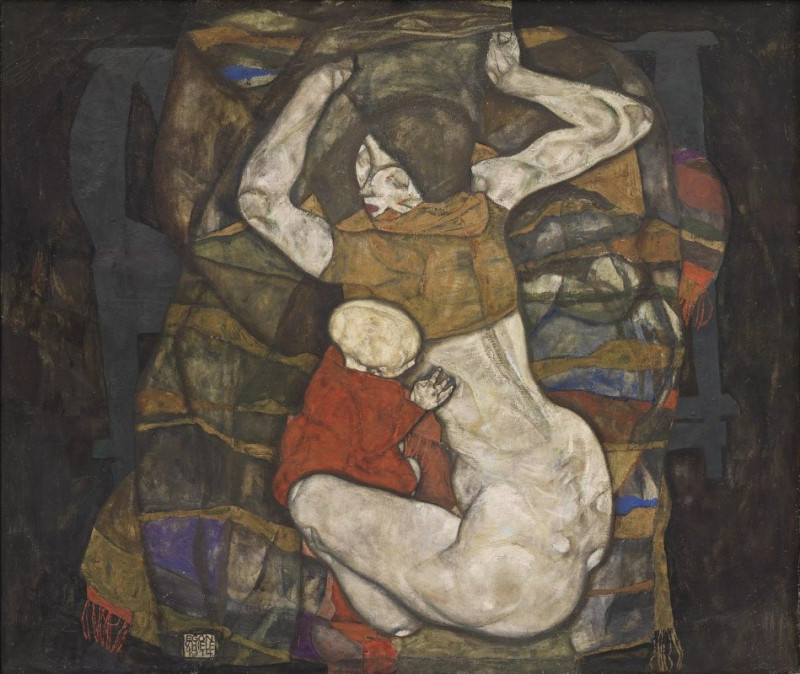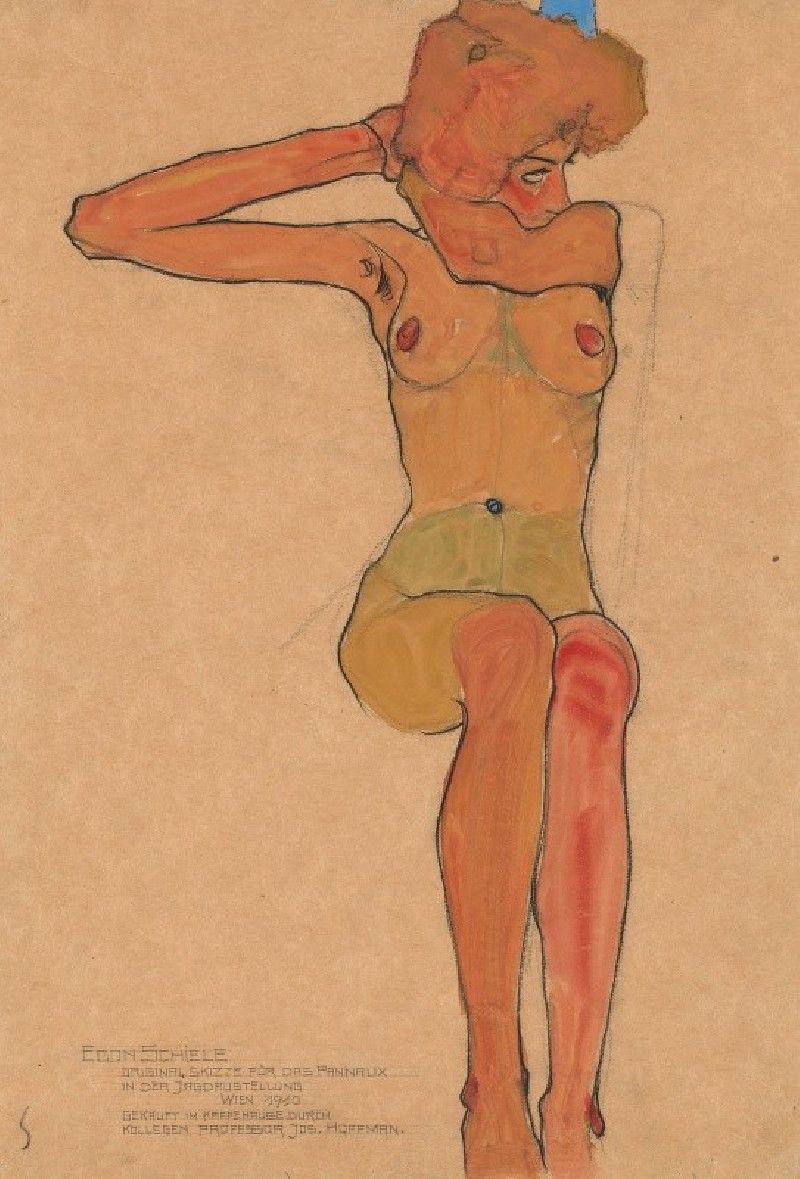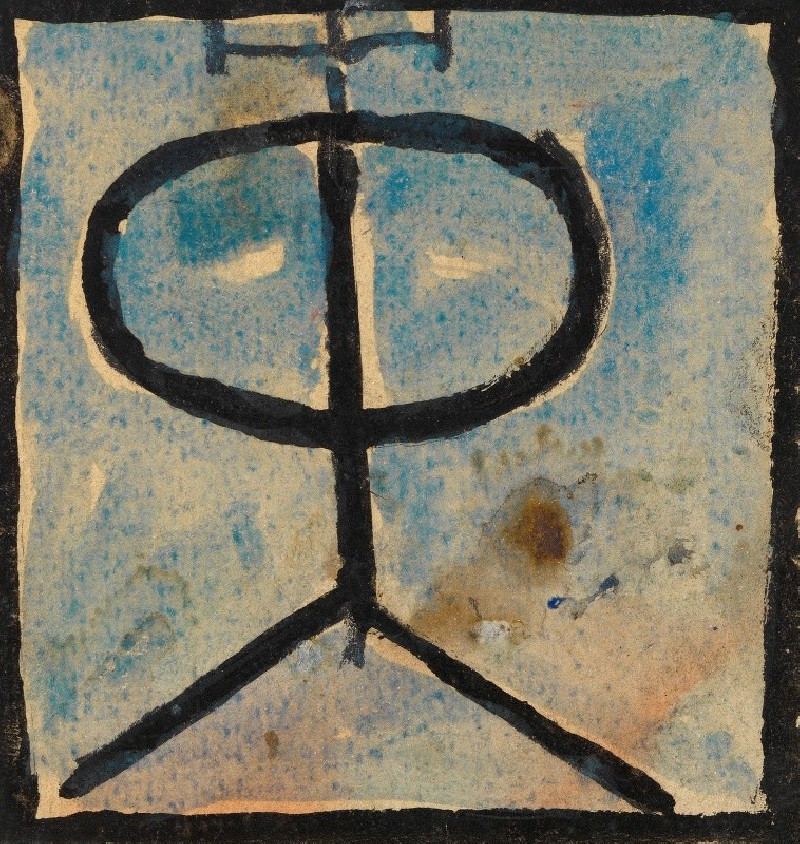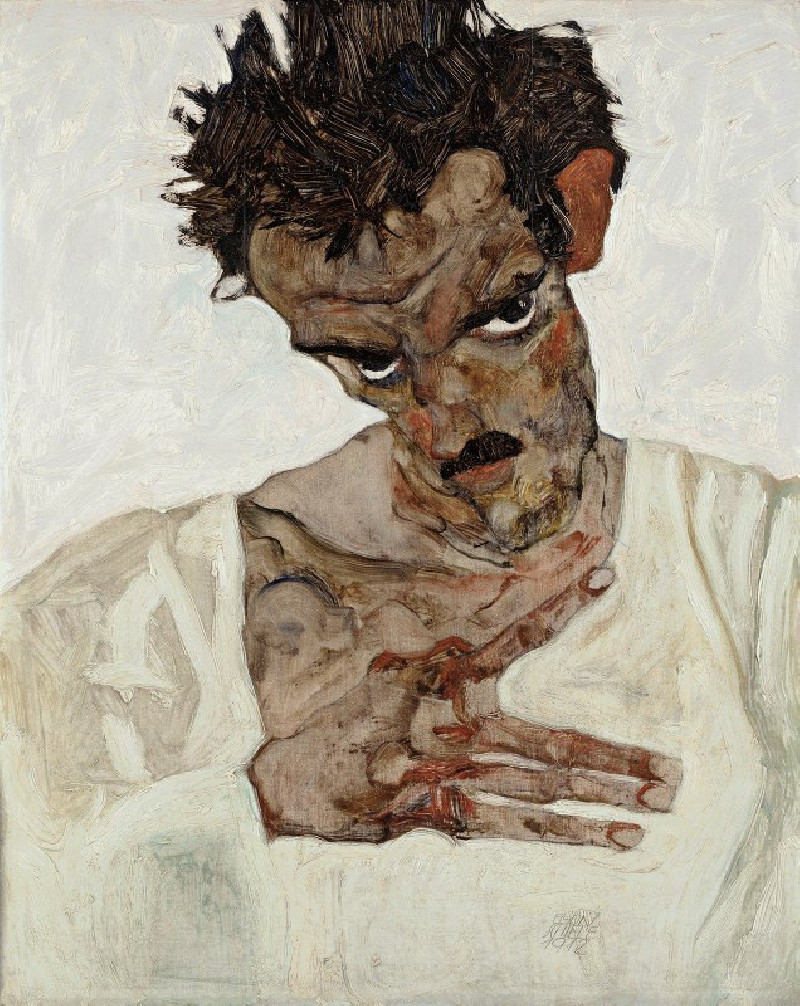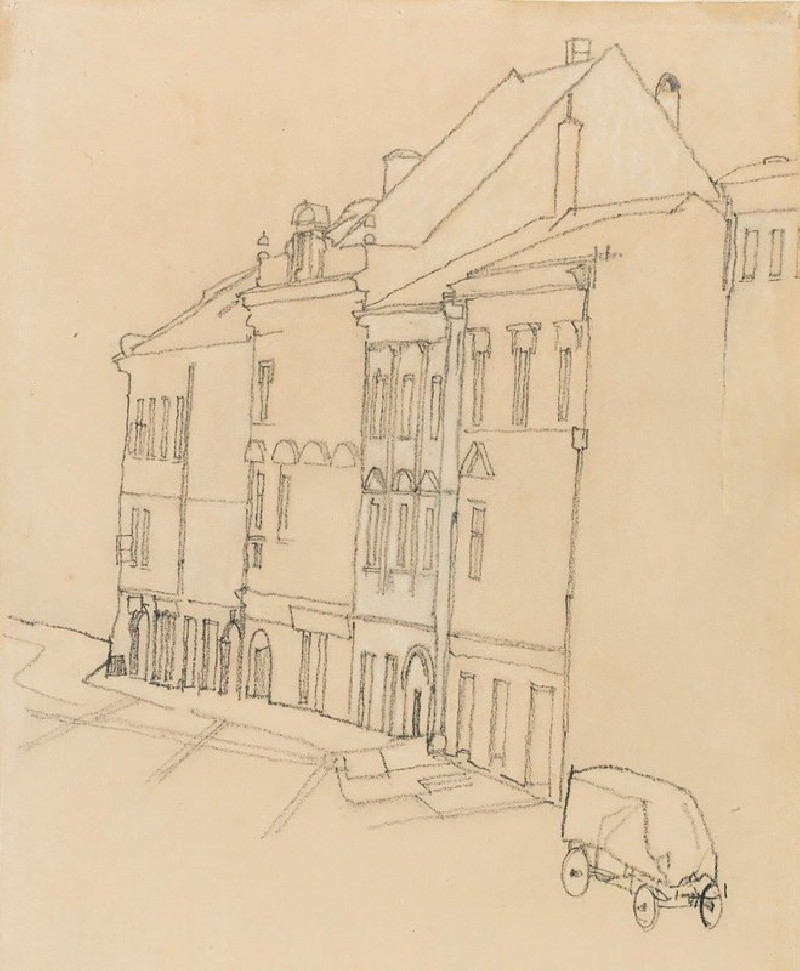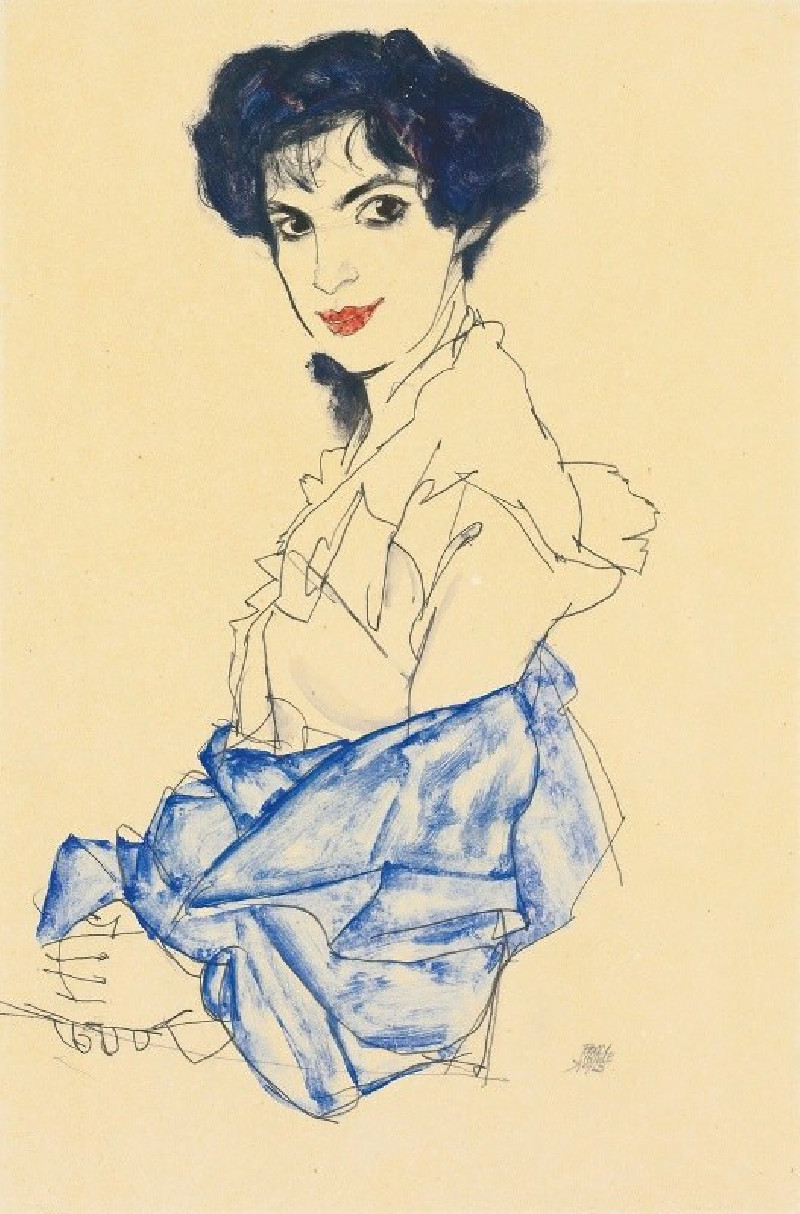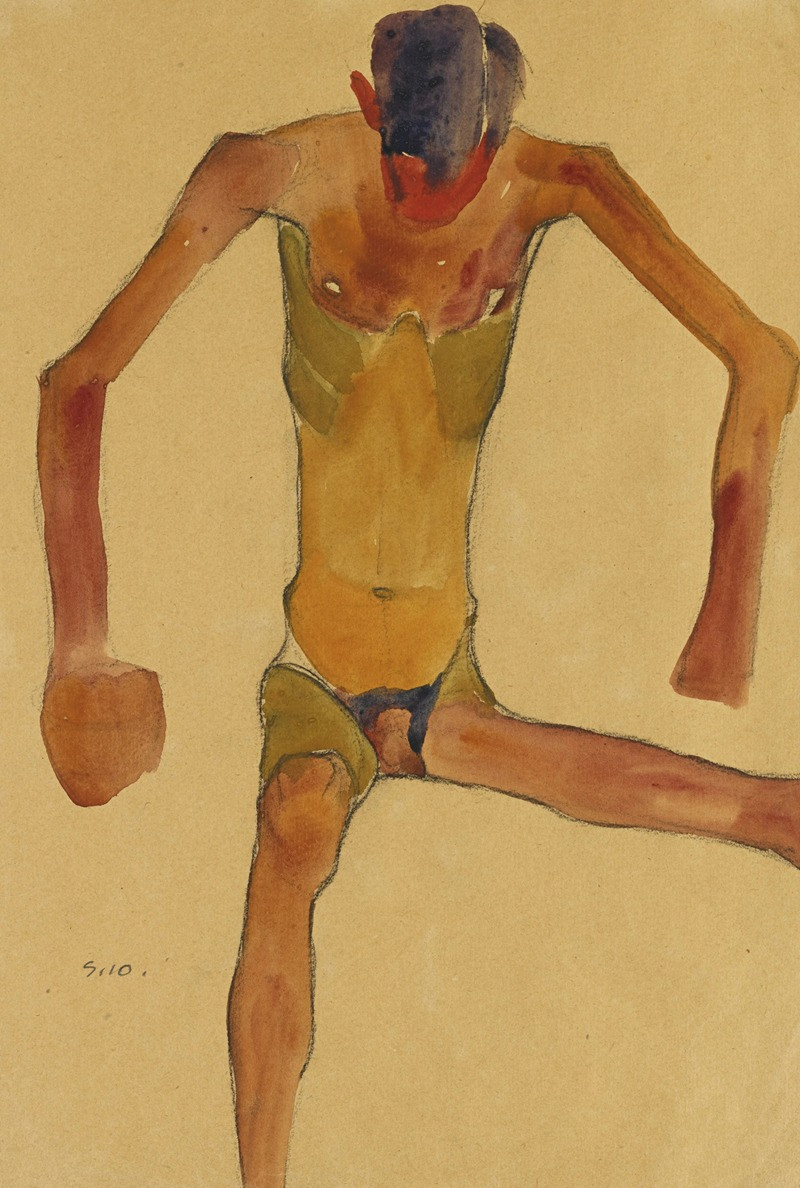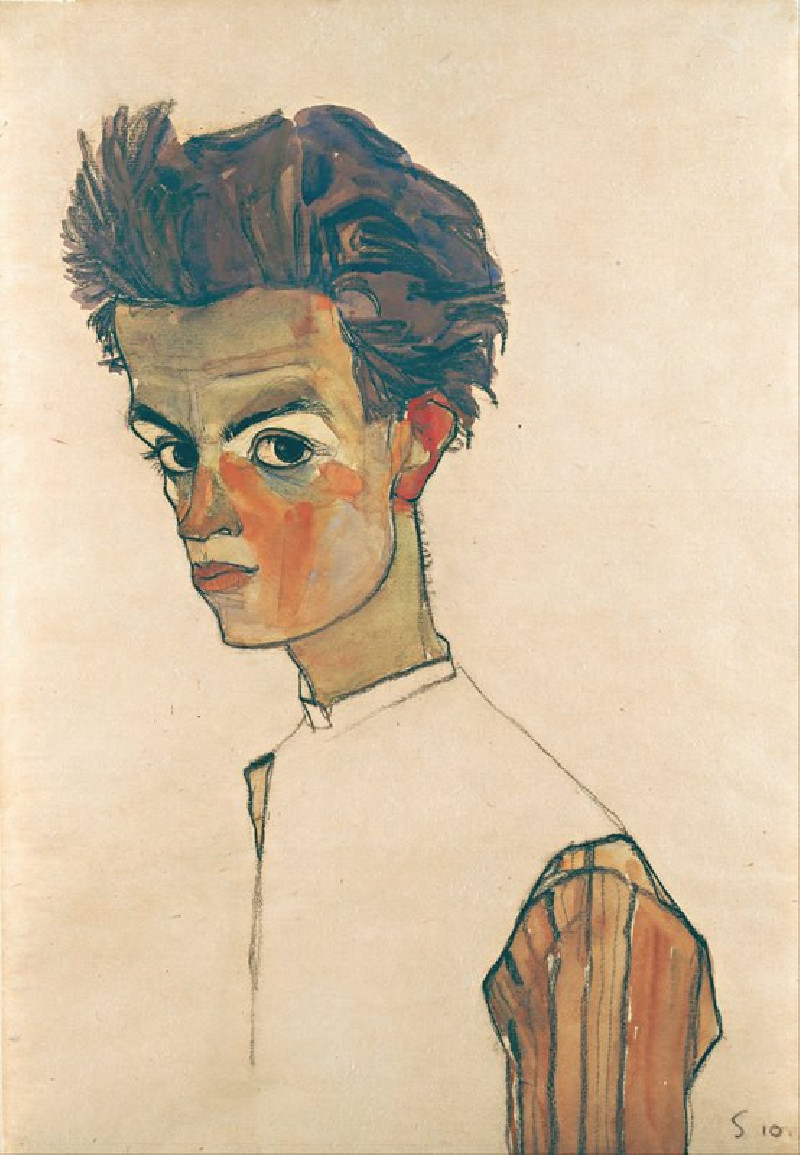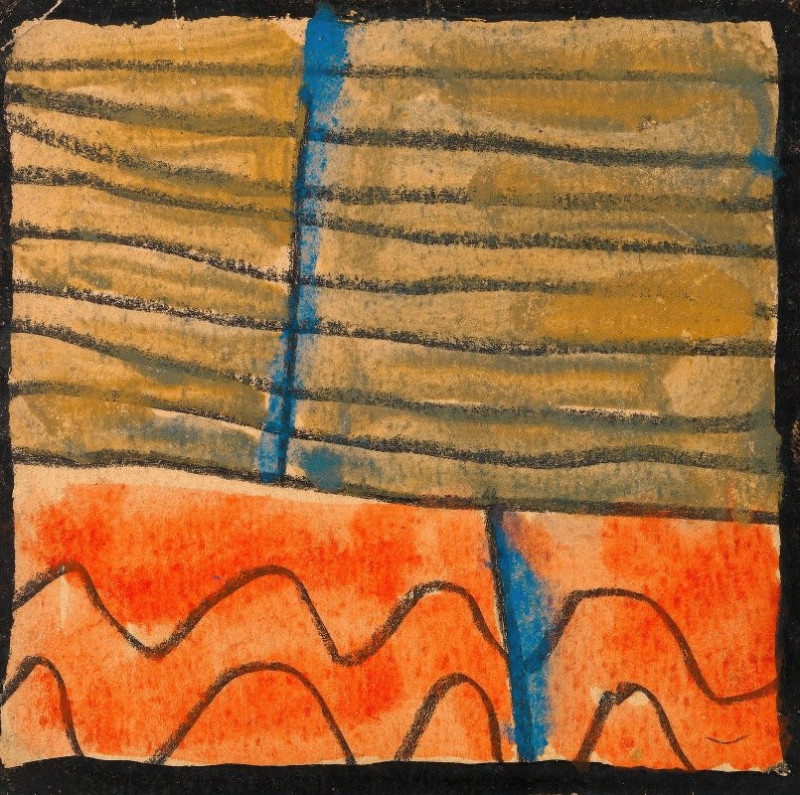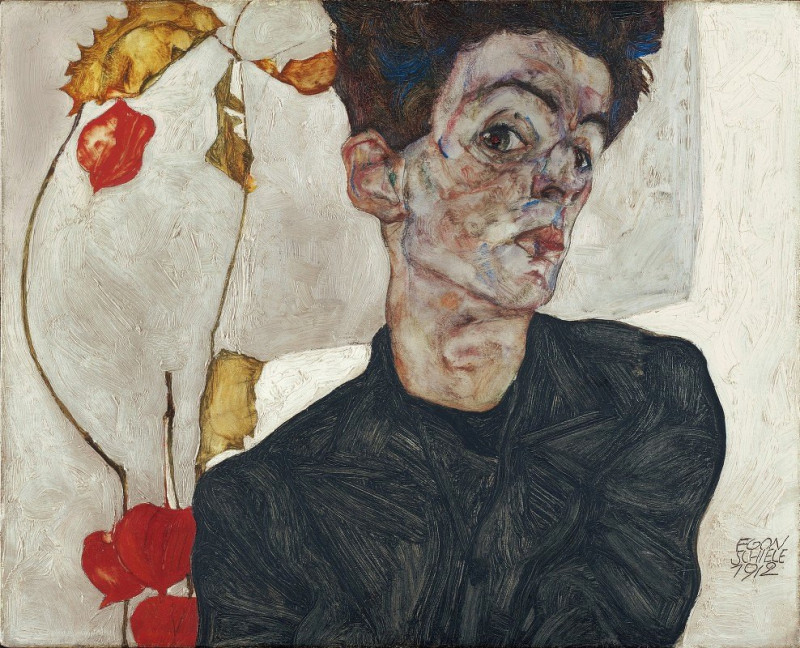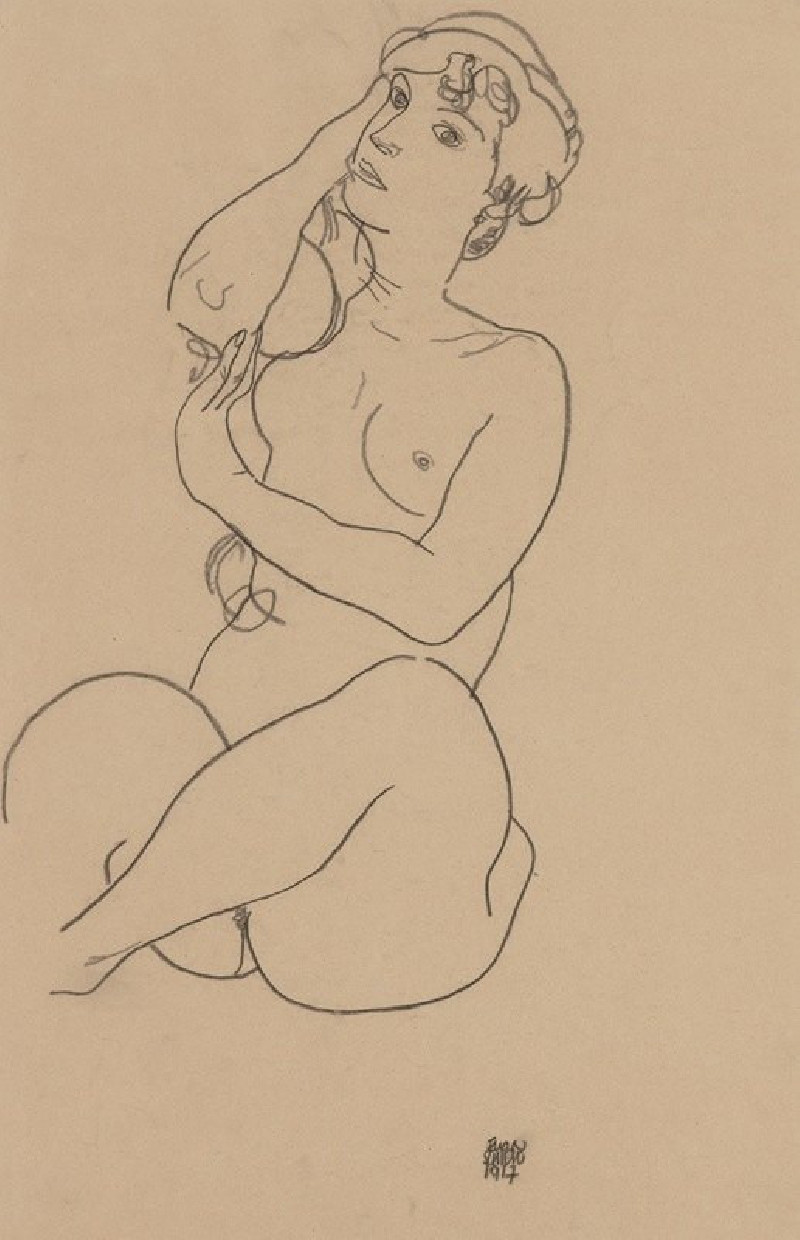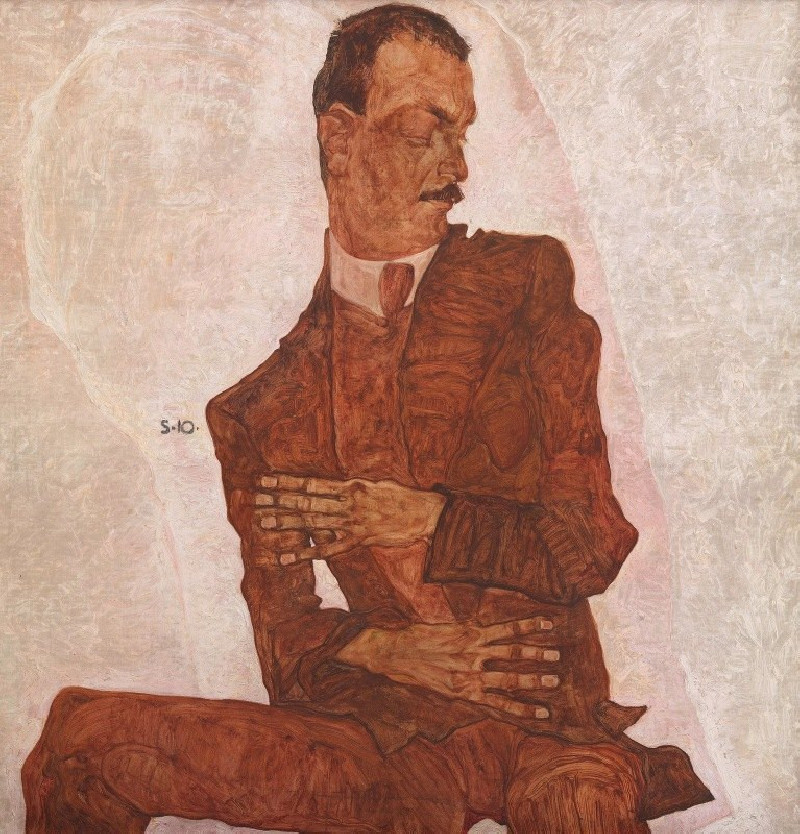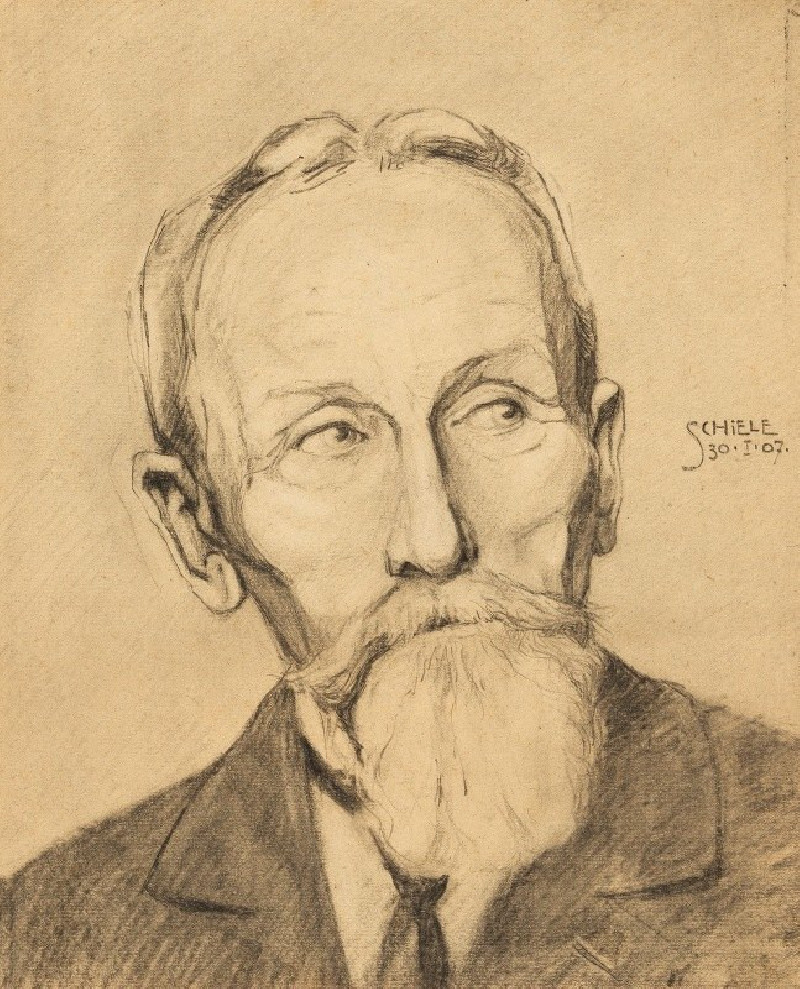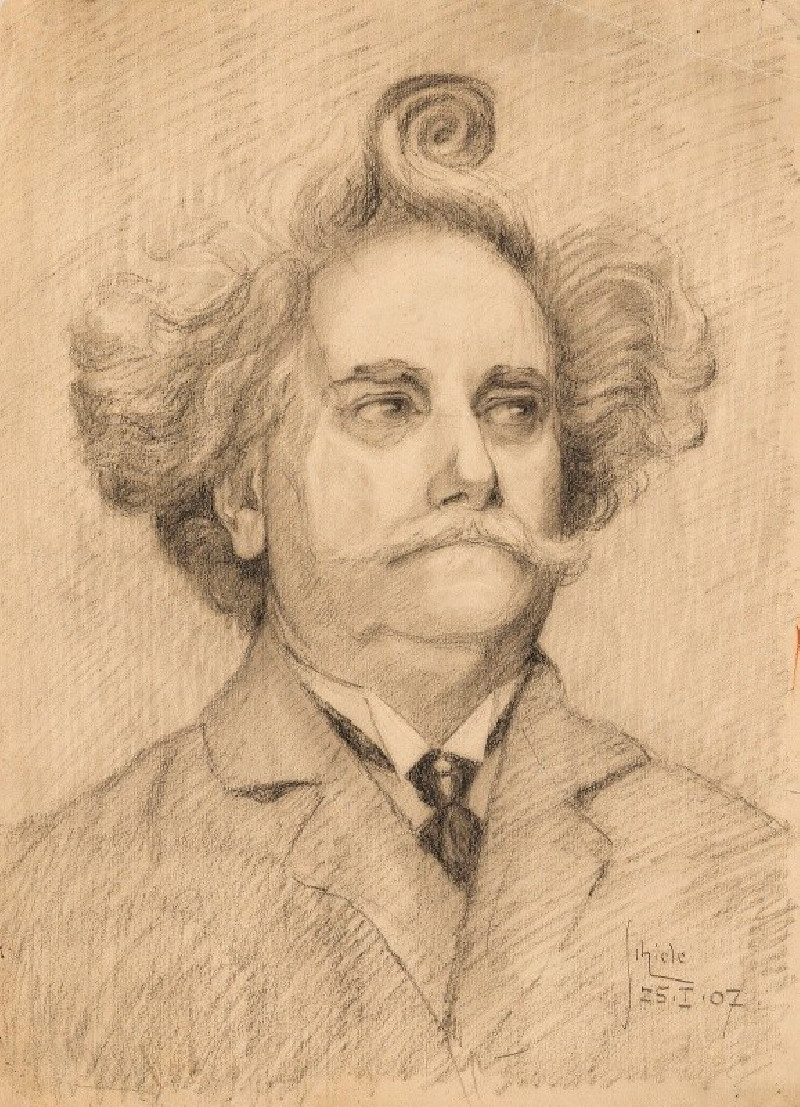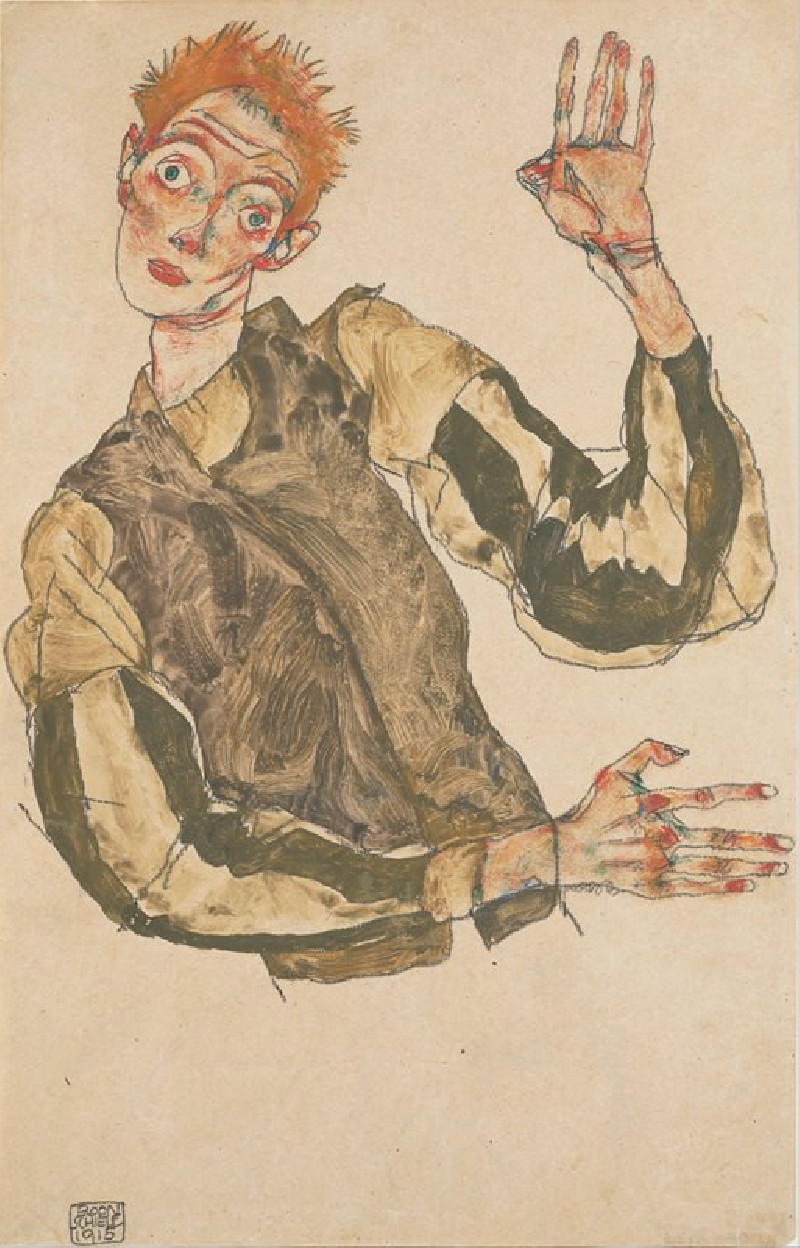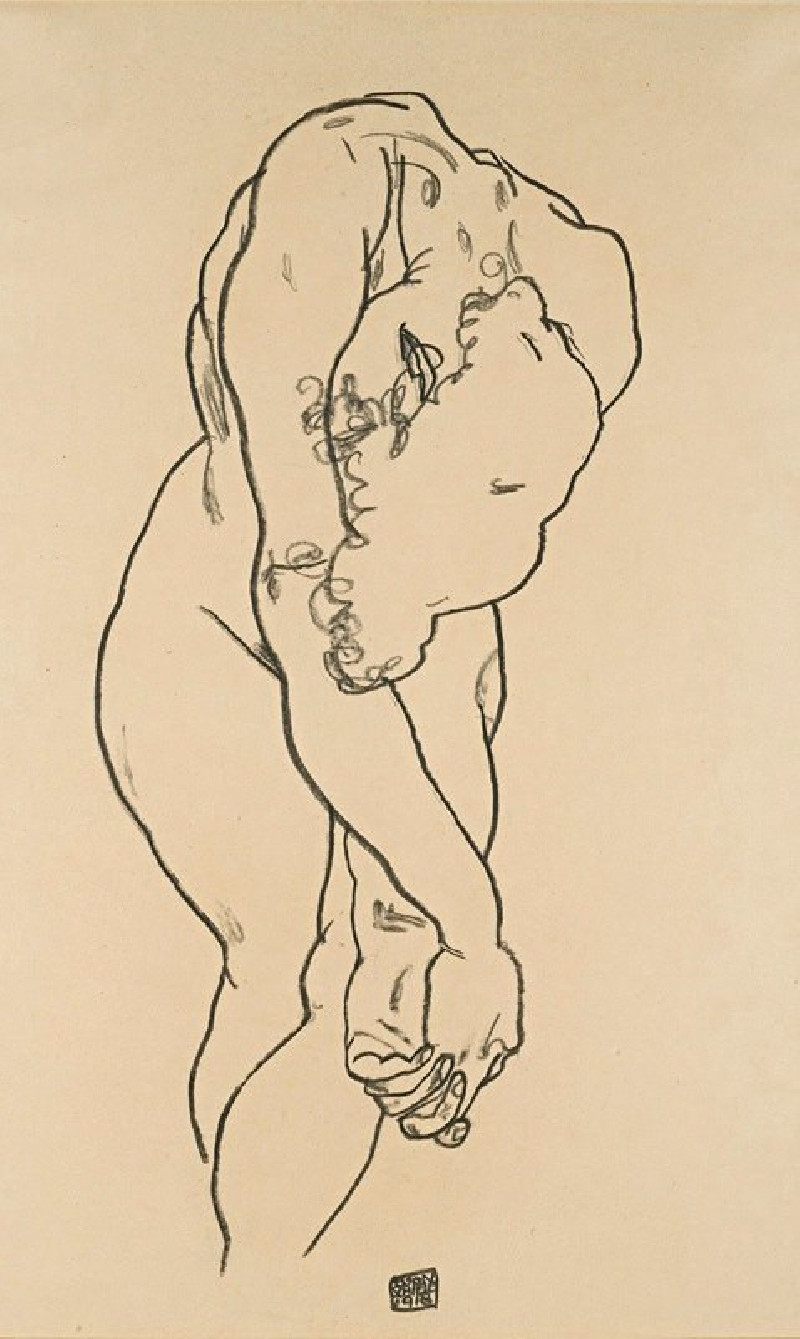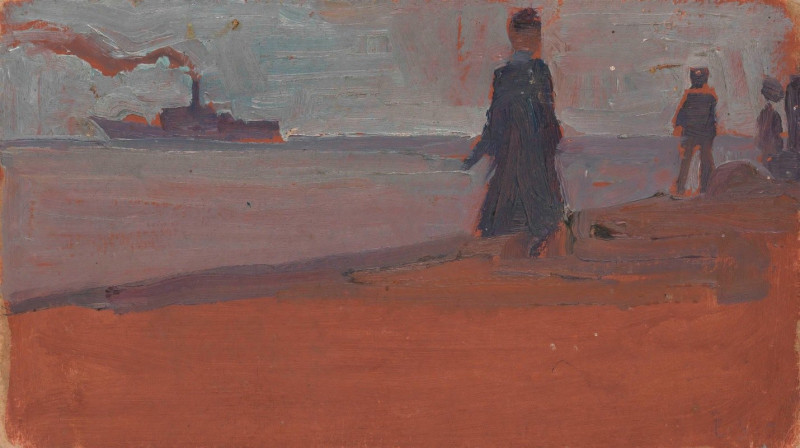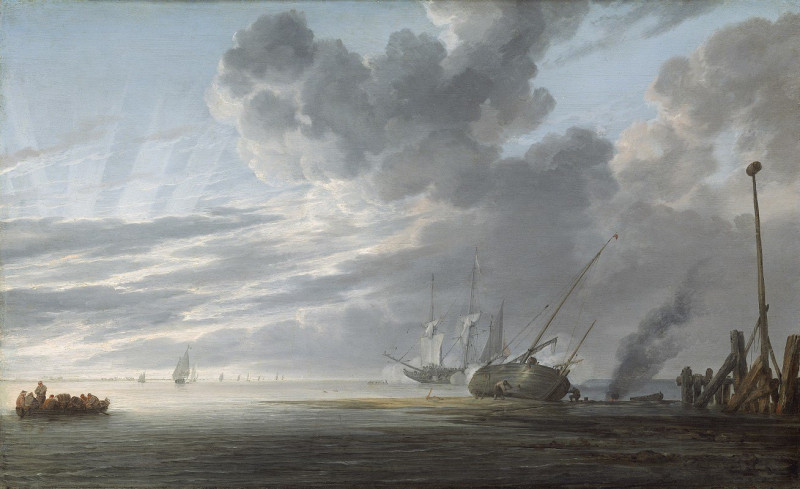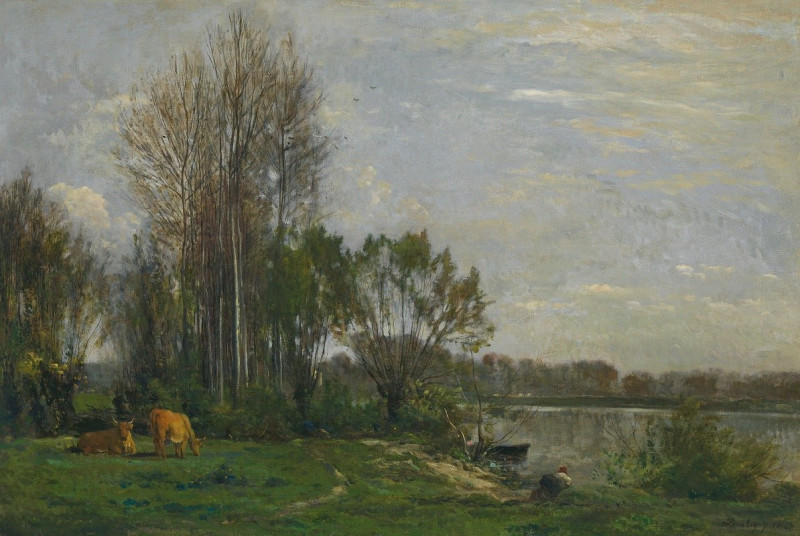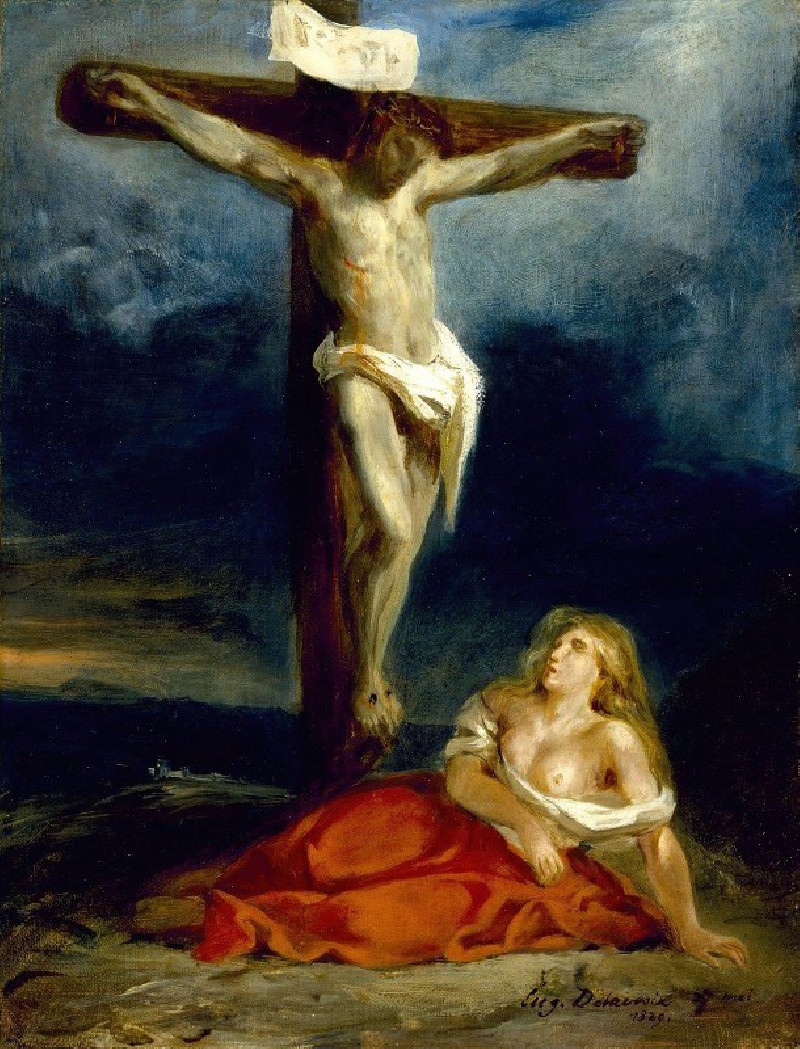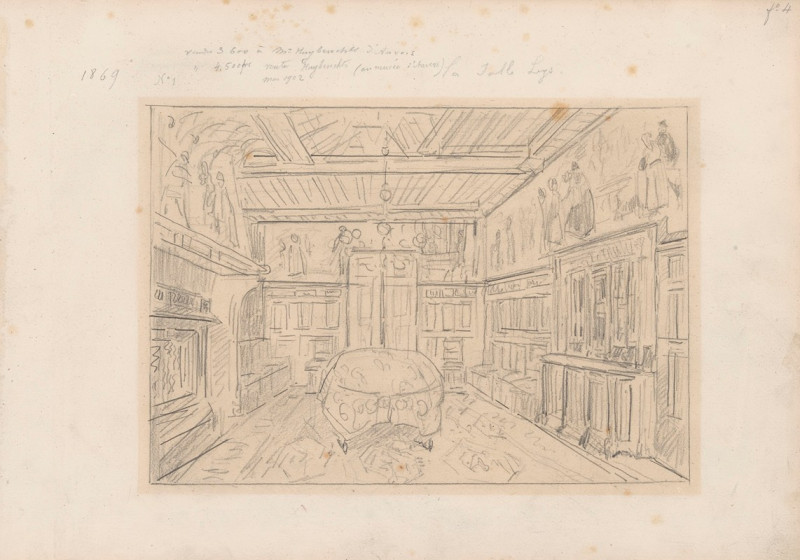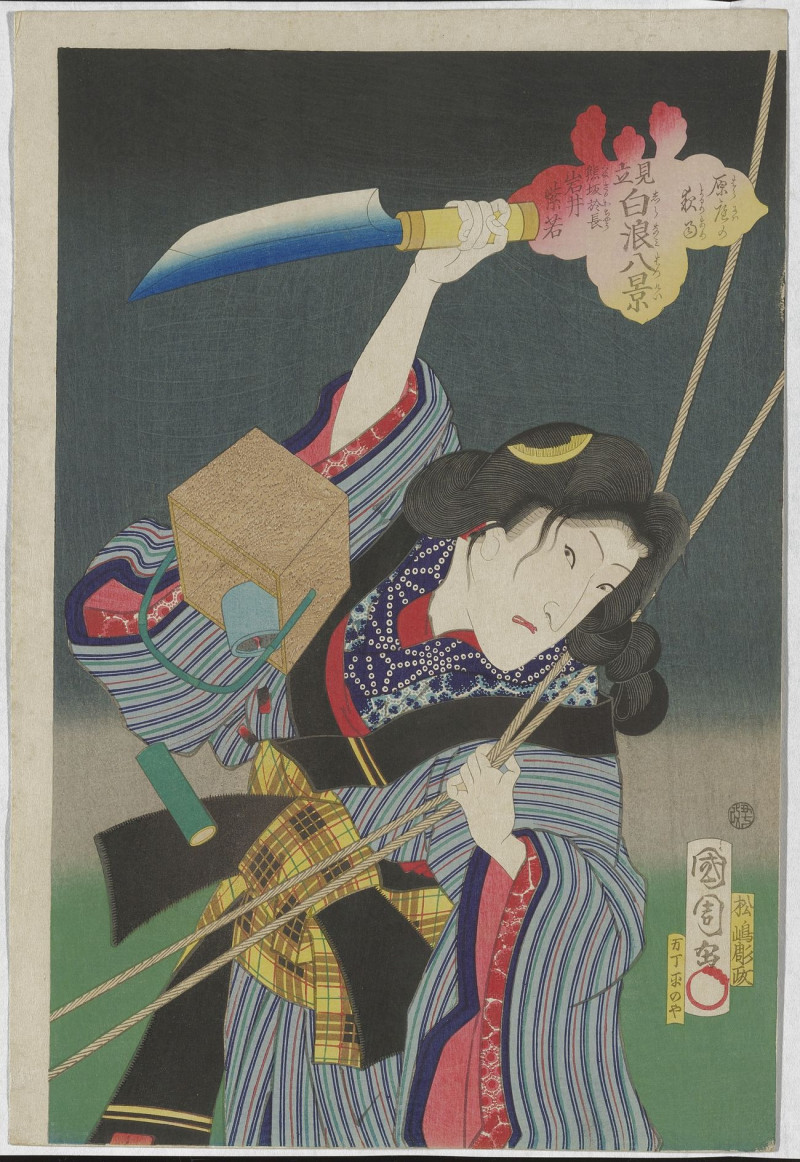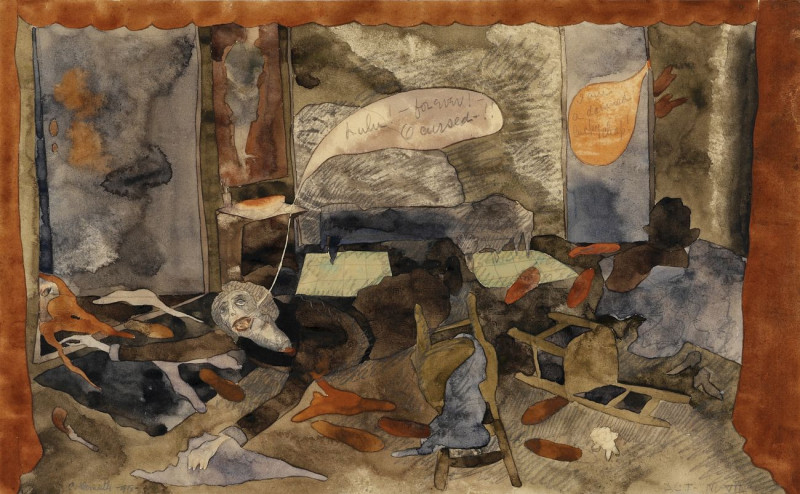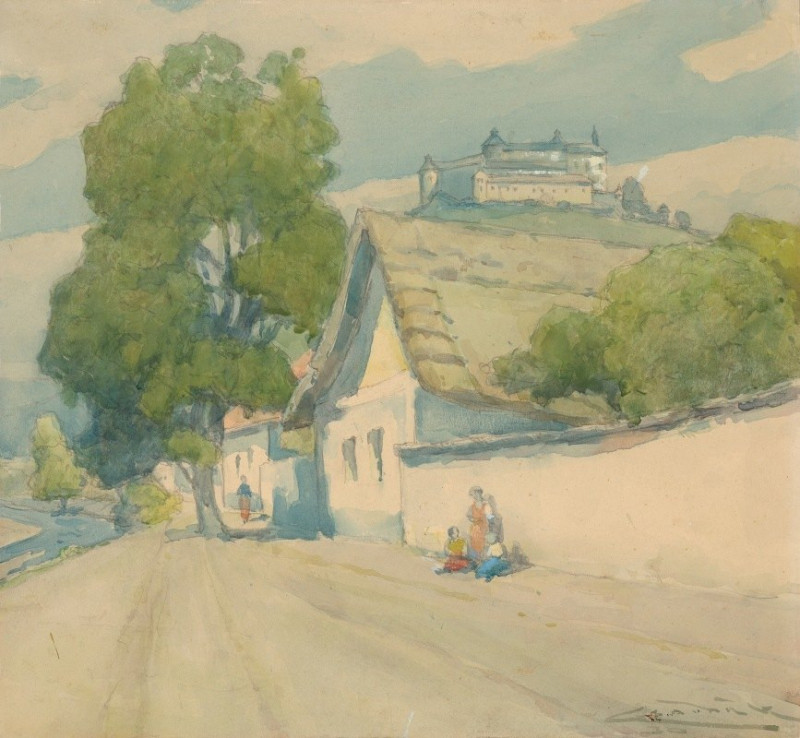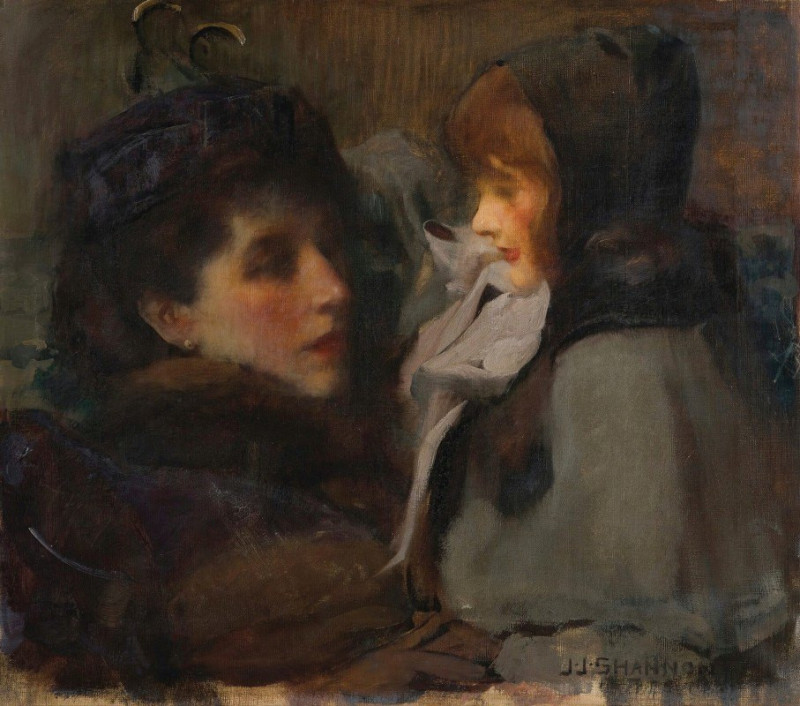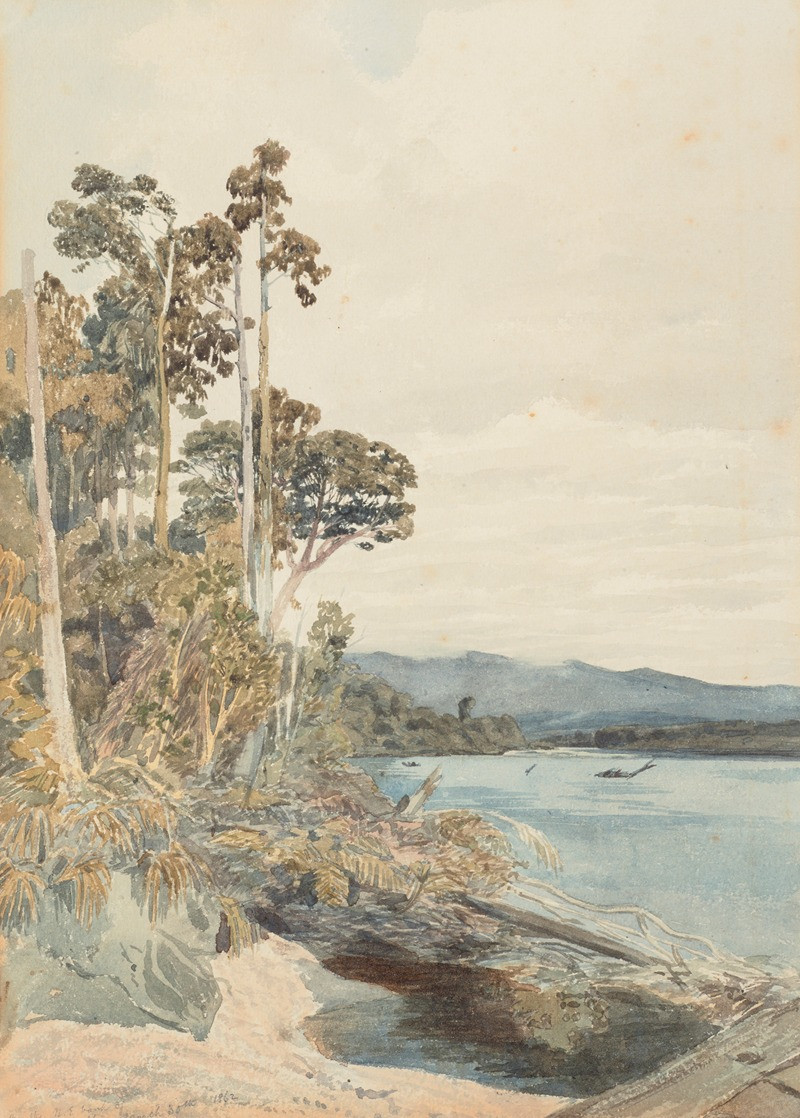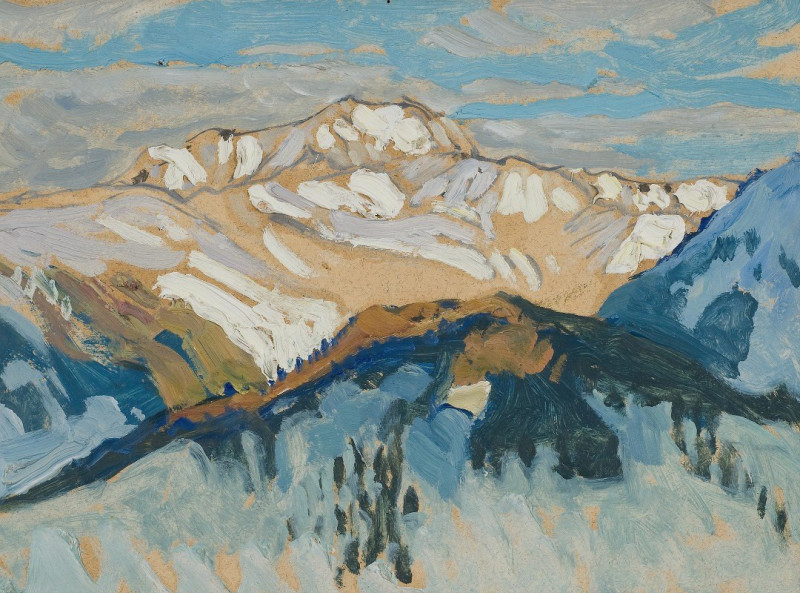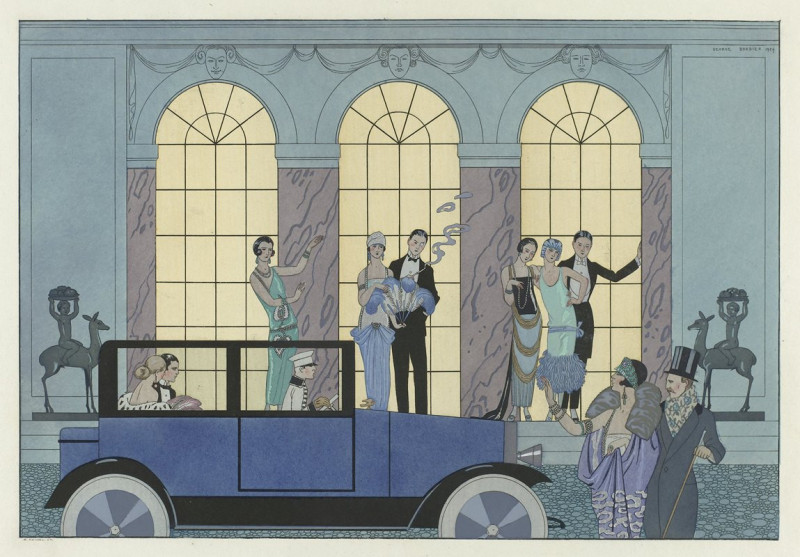Landscape with raven (1911)
Technique: Giclée quality print
Recommended by our customers
More about this artwork
In the painting, a rather somber landscape unfolds under a sky filled with flying ravens. At the center stands a striking structure, possibly a house, painted predominantly in dark hues with patches of brighter colors. It is perched atop a steep, rugged hill that is delineated with expressive, swift brushstrokes conveying a sense of rough, uneven terrain. The house itself seems to be surrounded by skeletal, bare trees, adding to the bleakness of the scene. Prominent white lines, perhaps suggesting scaffolding or some form of structural support, frame parts of the building, creating a stark contrast against the darker elements of the composition. The landscape surrounding the house is tinted with dark greens and browns, possibly indicating dense vegetation or the shadowy gloom of the setting.
Delivery
Returns
Egon Schiele was an Austrian painter. A protégé of Gustav Klimt, Schiele was a major figurative painter of the early 20th century. His work is noted for its intensity and its raw sexuality, and the many self-portraits the artist produced, including nude self-portraits. The twisted body shapes and the expressive line that characterize Schiele's paintings and drawings mark the artist as an early exponent of Expressionism.

